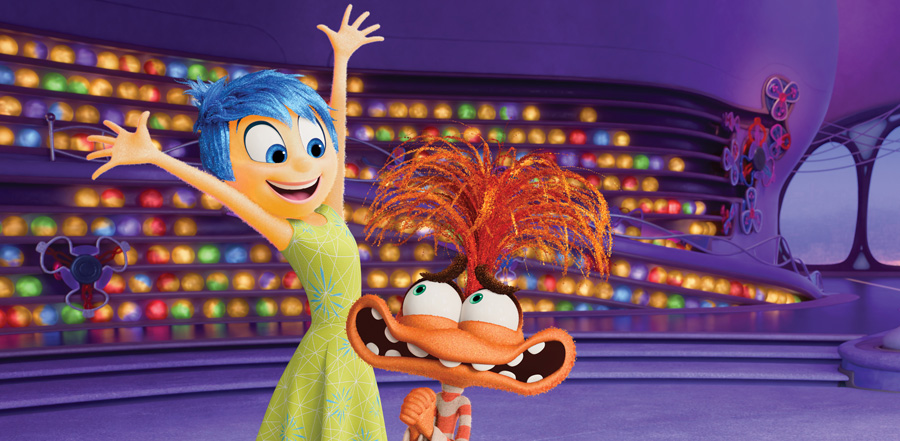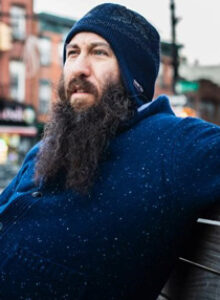Movie blockbusters have always been a staple of summer entertainment, providing thrilling escapism with larger-than-life characters and spectacular action sequences. However, recent movies like “Inside Out 2” and, even more surprisingly, “Bad Boys: Ride or Die” have added a new dimension to the genre by addressing mental health issues in a manner previously unseen in popcorn escapism.

Image credit: Disney
Inside Out 2: Navigating Puberty with a New Cast of Emotions
“Inside Out 2,” the highly anticipated sequel to the beloved animated film, tackles the complex emotional landscape of adolescence. As Riley enters puberty, she is joined by a new set of emotions, including Embarrassment, Envy, Ennui, and Anxiety. Anxiety, voiced by Maya Hawke, plays a central role in Riley’s journey. The film portrays how anxiety, with its well-meaning but misguided attempts to prepare Riley for the future, can lead to new anxiety-based beliefs and a reshaped sense of self.
As a father of four children in various stages of puberty, I find the depiction of anxiety in “Inside Out 2” to be incredibly relatable. Anxiety often dictates how we operate and determines our sense of worth. The film’s portrayal of a panic attack at its climax is especially harrowing, offering a poignant representation of a struggle that many viewers prone to anxiety will find all too familiar.
This depiction hits close to home for me, as I have wrestled with anxiety silently since puberty. Like the movie, I have experienced moments when anxiety completely takes over, dictating my actions and affecting my self-worth. I have learned to navigate it, and I believe this portrayal will resonate deeply with anyone who has faced similar struggles.
Bad Boys: Ride or Die: Challenging Stigmas in an Action-Packed Sequel
In a surprising turn, the latest installment in the “Bad Boys” franchise, “Bad Boys: Ride or Die,” delves into the mental health struggles of its iconic characters, Mike Lowrey (Will Smith) and Marcus Burnett (Martin Lawrence). The film, which sees the aging detectives grappling with grief, anxiety, and the toll of their long careers, provides a refreshingly honest departure from the traditional action formula.
Will Smith and Martin Lawrence, now in their late 50s, bring depth to their roles beyond the usual bravado. Mike Lowrey’s panic attacks during gun battles and Marcus Burnett’s near-death heart attack and subsequent spiritual awakening offer a nuanced exploration of vulnerability and redemption. These elements allow viewers to see the characters in a more human and relatable light, breaking down the stigma surrounding mental health issues.
The inclusion of these themes in a mainstream action movie is significant. Traditionally, society has positioned men as strong and stoic, discouraging expressions of vulnerability. This film challenges that notion, showing that even the most formidable heroes can struggle with mental health. By portraying these struggles, “Bad Boys: Ride or Die” opens the door for meaningful conversations about mental health, especially among men who may feel pressured to conform to outdated notions of masculinity. Action aficionados need not worry—the movie climaxes with a wild shootout in an abandoned alligator theme park!
A Personal Reflection
As someone who has experienced anxiety since adolescence, I find these portrayals both validating and hopeful. They reflect a growing awareness and acceptance of mental health issues in our society, encouraging more people to seek help and support. Moreover, these films highlight the importance of addressing mental wellness in a way that feels natural and necessary rather than sensationalized.
Moving Forward: Reducing Stigmas and Supporting Mental Health
Incorporating mental health themes in blockbuster movies like “Inside Out 2” and “Bad Boys: Ride or Die” is a step in the right direction. To continue this progress, we must educate people about mental wellness, reshape perceptions of manhood, and provide better training for medical professionals and first responders, including our clergy members. As a member of Mayor Eric Adams’ newly established Faith-Based Mental Health Working Group, I am committed to equipping clergy who often unknowingly serve as first responders to better support their communities in times of need.
I commend the mayor for discussing mental health in New York. Additionally, I applaud Governor Hochul for her commitment to youth mental health and the recent passing of regulations to support this effort. The struggle is accurate, and these steps are crucial in addressing it.
By reducing stigmas and promoting open discussions about mental health, we can create a more inclusive and supportive society. By smashing stereotypes and tackling mental health head-on, films like “Inside Out 2” and “Bad Boys: Ride or Die” are shaking up the blockbuster formula in the best way possible. They remind us that even our most beloved heroes aren’t immune to life’s challenges. So next time you’re munching on popcorn, remember that behind every explosive car chase, there’s a deeper story waiting to be told. And who knows? The movies might inspire you to be a hero in your mental health journey.
June is Men’s Mental Health Awareness Month. Some tips for addressing mental health include:
- Speak to someone you trust
- Reach out to your doctor
- Seek a licensed therapist
Simcha Weinstein is a renowned author and advocate, dubbed “New York’s Hippest Rabbi” by PBS. He is the DEI and community engagement coordinator at Families Together in NYS, founder of the Jewish Autism Network, and co-lead member of NYADD (New York Alliance for Developmental Disabilities).




